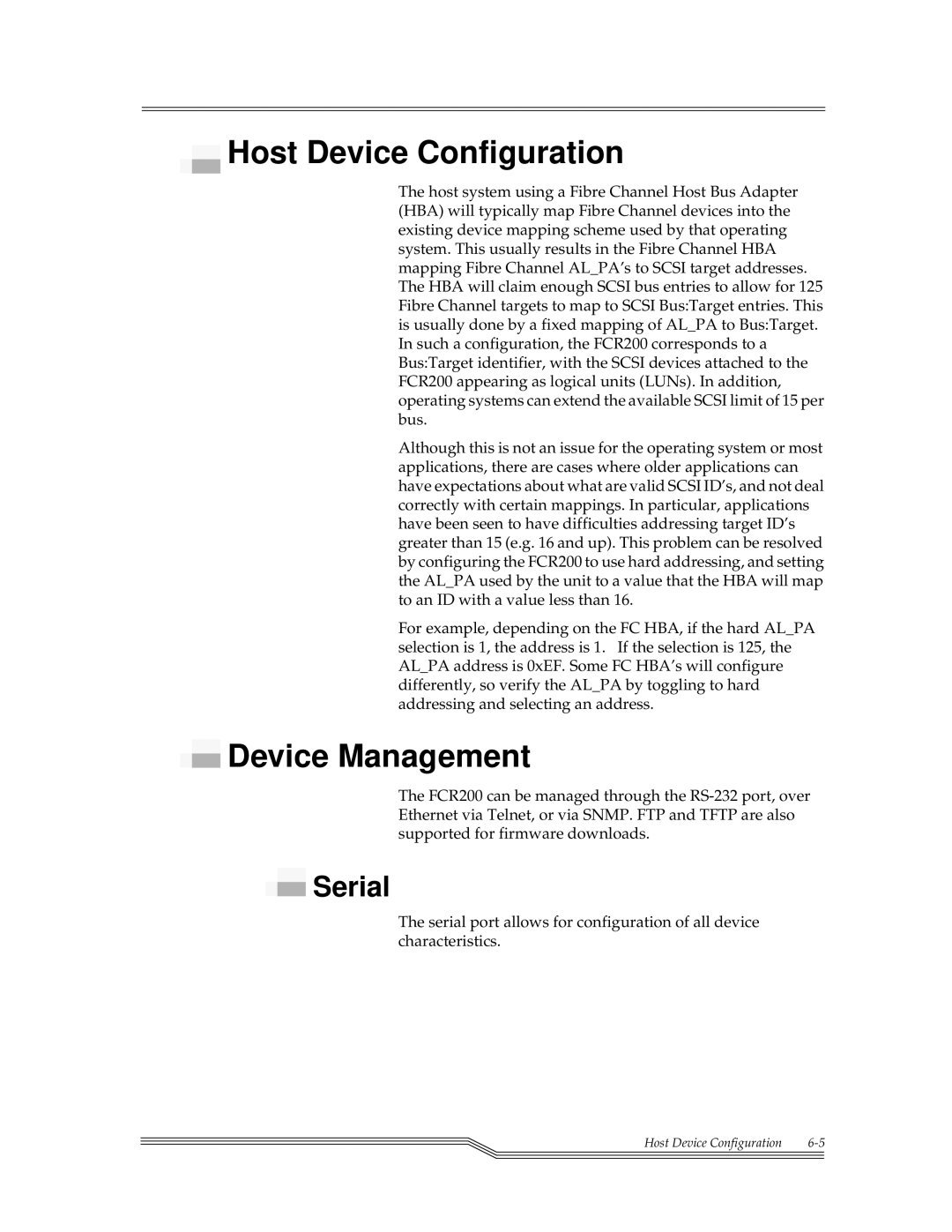
 Host Device Configuration
Host Device Configuration
The host system using a Fibre Channel Host Bus Adapter (HBA) will typically map Fibre Channel devices into the existing device mapping scheme used by that operating system. This usually results in the Fibre Channel HBA mapping Fibre Channel AL_PA’s to SCSI target addresses. The HBA will claim enough SCSI bus entries to allow for 125 Fibre Channel targets to map to SCSI Bus:Target entries. This is usually done by a fixed mapping of AL_PA to Bus:Target. In such a configuration, the FCR200 corresponds to a Bus:Target identifier, with the SCSI devices attached to the FCR200 appearing as logical units (LUNs). In addition, operating systems can extend the available SCSI limit of 15 per bus.
Although this is not an issue for the operating system or most applications, there are cases where older applications can have expectations about what are valid SCSI ID’s, and not deal correctly with certain mappings. In particular, applications have been seen to have difficulties addressing target ID’s greater than 15 (e.g. 16 and up). This problem can be resolved by configuring the FCR200 to use hard addressing, and setting the AL_PA used by the unit to a value that the HBA will map to an ID with a value less than 16.
For example, depending on the FC HBA, if the hard AL_PA selection is 1, the address is 1. If the selection is 125, the AL_PA address is 0xEF. Some FC HBA’s will configure differently, so verify the AL_PA by toggling to hard addressing and selecting an address.
 Device Management
Device Management
The FCR200 can be managed through the
 Serial
Serial
The serial port allows for configuration of all device characteristics.
Host Device Configuration | |
|
|
|
|
